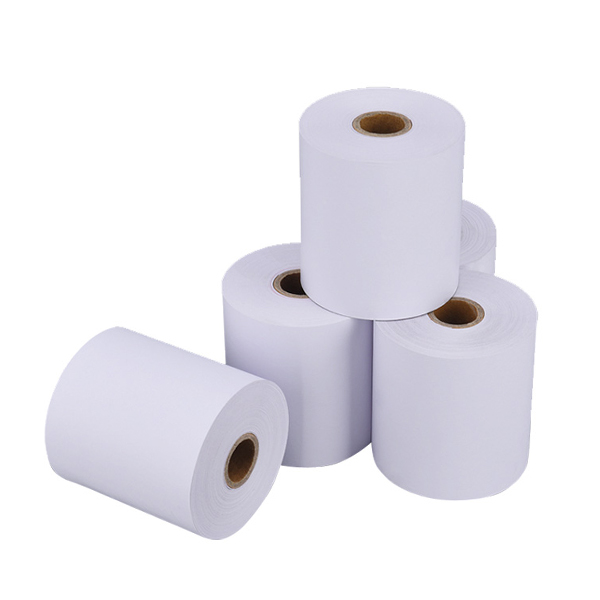

Views: 28 Author: Winter Wang Publish Time: 2024-04-23 Origin: Site









Thermal paper is a unique printing medium that can produce clear images and text without the need for traditional ink or toner. This seemingly magical paper is ubiquitous in our daily lives, from supermarket receipts to shipping labels, from medical reports to boarding passes. Let's delve into the various aspects of this fascinating paper.
How Thermal Paper Works
The core secret of thermal paper lies in its special coating on the surface. This coating typically consists of the following components:
1. **Leuco Dye**: Colorless at room temperature, it becomes colored when heated.
2. **Developer**: Reacts with the dye to promote color formation.
3. **Sensitizer**: Lowers the dye's color-forming temperature, increasing sensitivity.
When thermal paper is heated, these components undergo a chemical reaction, turning the colorless dye into a colored state. Typically, thermal paper changes from a light color to a dark color when heated, most commonly turning black, but some special types can turn blue, red, or other colors.
Thermal Printing Technology
Thermal printers are devices designed to work with thermal paper. Their working principle is relatively simple:
1. **Print Head**: Composed of many tiny heating elements.
2. **Heating Process**: Selectively heats specific elements based on the content to be printed.
3. **Color Reaction**: The heating elements contact the surface of the thermal paper, triggering a chemical reaction to form images or text.
This printing method does not require ink cartridges or toner, greatly simplifying the printing process and reducing maintenance costs.
Applications of Thermal Paper
Thermal paper and thermal printing technology have wide applications in various fields:
1. **Retail**: Receipts, price tags
2. **Logistics**: Shipping labels, warehouse tags
3. **Medical**: ECGs, ultrasound reports
4. **Transportation**: Boarding passes, tickets
5. **Banking**: ATM transaction receipts
6. **Food Service**: Order slips, kitchen order printing
7. **Entertainment**: Lottery tickets, admission tickets
Advantages of Thermal Paper
1. **No Ink Required**: Reduces printing costs and avoids the hassle of ink replenishment or replacement.
2. **Fast Printing Speed**: The simple thermal printing process allows for high-speed printing.
3. **High Clarity**: Thermal printing can achieve high resolution, typically 300 DPI or higher.
4. **Quiet Operation**: Thermal printers operate more quietly compared to dot matrix printers.
5. **Simple Maintenance**: No ink cartridges or toner to replace, reducing maintenance work.
Limitations of Thermal Paper
Despite its many advantages, thermal paper has some limitations:
1. **Heat Sensitivity**: Prolonged exposure to high temperatures may cause the printed content to fade or the entire paper to turn black.
2. **Short Preservation Time**: Not suitable for archiving important documents long-term.
3. **Light Sensitivity**: Strong light may cause the printed content to fade.
4. **Chemical Sensitivity**: Certain chemicals (e.g., plasticizers) may react with the thermal coating, causing the printed content to blur or disappear.
5. **Environmental Concerns**: Some thermal paper contains Bisphenol A (BPA), which may pose environmental and health risks.
Future Development of Thermal Paper
With technological advancements, thermal paper and thermal printing technology continue to evolve:
1. **Eco-friendly Materials**: Developing thermal coatings free of harmful substances, such as BPA-free thermal paper.
2. **Enhanced Durability**: Creating thermal paper that can be preserved long-term, expanding its application range.
3. **Multicolor Thermal Paper**: Researching thermal paper capable of displaying multiple colors, enriching information transmission.
4. **Smart Labels**: Combining thermal technology with RFID and other technologies to develop intelligent labeling solutions.
Conclusion
As a unique printing medium, thermal paper plays a crucial role in many fields due to its simplicity, speed, and cost-effectiveness. Despite some limitations, it remains a highly practical and efficient solution in specific application scenarios. With continuous technological advancements, we can look forward to seeing thermal paper with broader applications and more environmentally friendly developments in the future.
Winter Wang
Whatsapp/Wechat:+86 157 3670 0185
Email:sales13@dtpapergroup.com